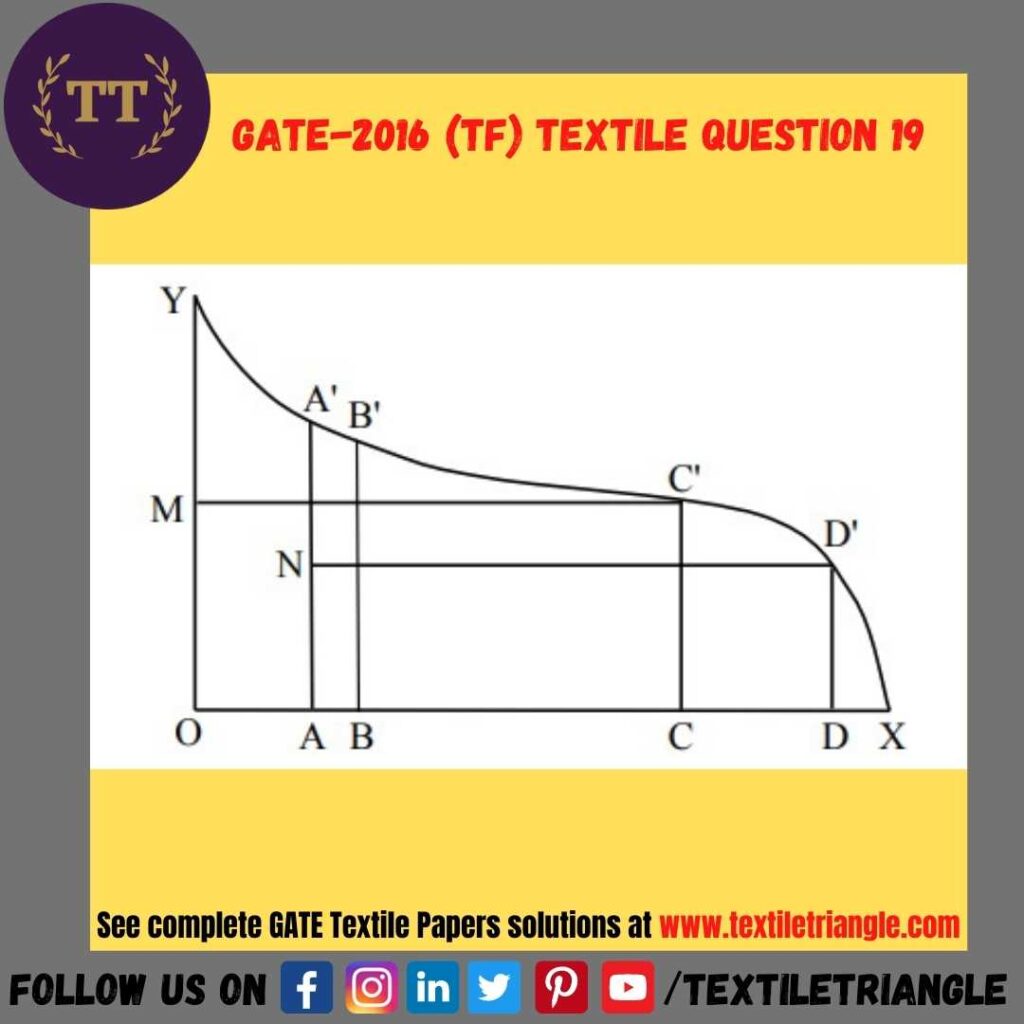Question 19 (Textile Engineering & Fibre Science)
A comb sorter diagram of cotton fibres is shown below:

where OM=0.5 OY, OA=0.25 OC, AN=0.5 AA’, and OB=0.25 OD. The effective length is
| (A) | AA’ |
| (B) | BB’ |
| (C) | CC’ |
| (D) | DD’ |
[Show Answer]
Write Here
Frequently Asked Questions | FAQs
What is effective length in comb sorter?
The effective length in a comb sorter refers to the number of elements that are considered during each pass of the sorting algorithm.
In a comb sorter, elements are compared in pairs and swapped if they are in the wrong order. The gap between the compared elements is initially set to the total number of elements in the array being sorted, and then reduced after each pass until it reaches a minimum value of 1.
The effective length of the comb sorter is the gap between the compared elements during each pass. As the gap decreases, the effective length decreases, and the sorting algorithm becomes more efficient. A larger effective length can lead to more comparisons being made, which can slow down the sorting process.
In general, a larger effective length can be useful for sorting larger arrays with many elements, while a smaller effective length may be more appropriate for smaller arrays with fewer elements. The choice of effective length will depend on the specific sorting problem and the characteristics of the input data.
What is fibre length by comb sorter?
Fiber length by comb sorter typically refers to the length of individual fibers in a sample of textile fibers that have been sorted using a comb sorter.
In the context of textile manufacturing, fiber length is an important characteristic of raw materials such as cotton, wool, and silk. Longer fibers are generally considered to be of higher quality because they produce stronger, more durable, and more lustrous yarns and fabrics.
To measure fiber length using a comb sorter, a sample of fibers is first carded, which involves aligning the fibers and removing any impurities. The carded fibers are then fed into a comb sorter, which separates the fibers based on their length. The effective length of the comb sorter is set to a specific value, and fibers that are longer than this length are combed out and collected in a separate container.
The fiber length by comb sorter method provides a quick and relatively inexpensive way to measure the length distribution of fibers in a sample. However, it is not as precise as other methods such as image analysis, which can provide more detailed information about the distribution of fiber lengths.
